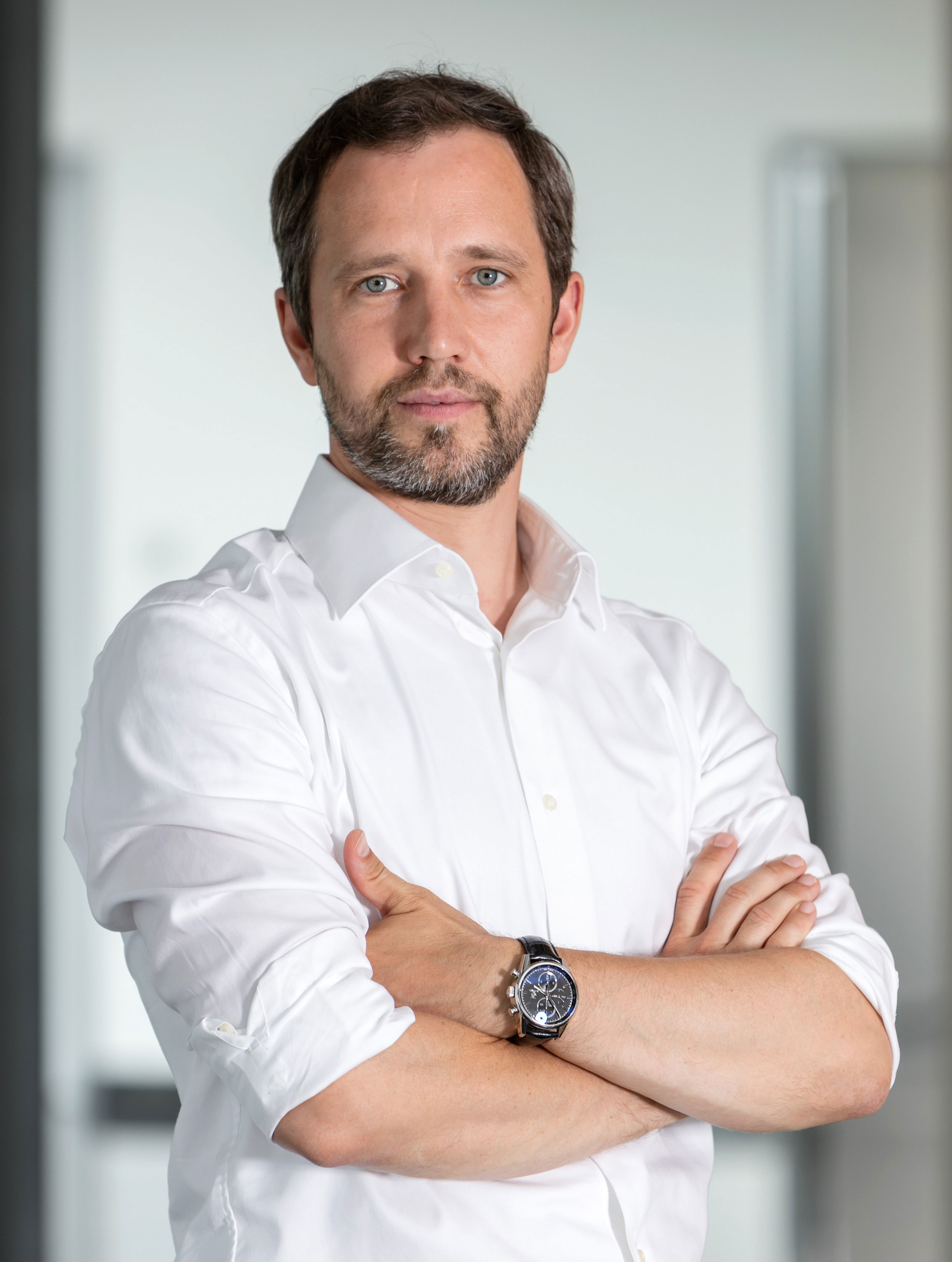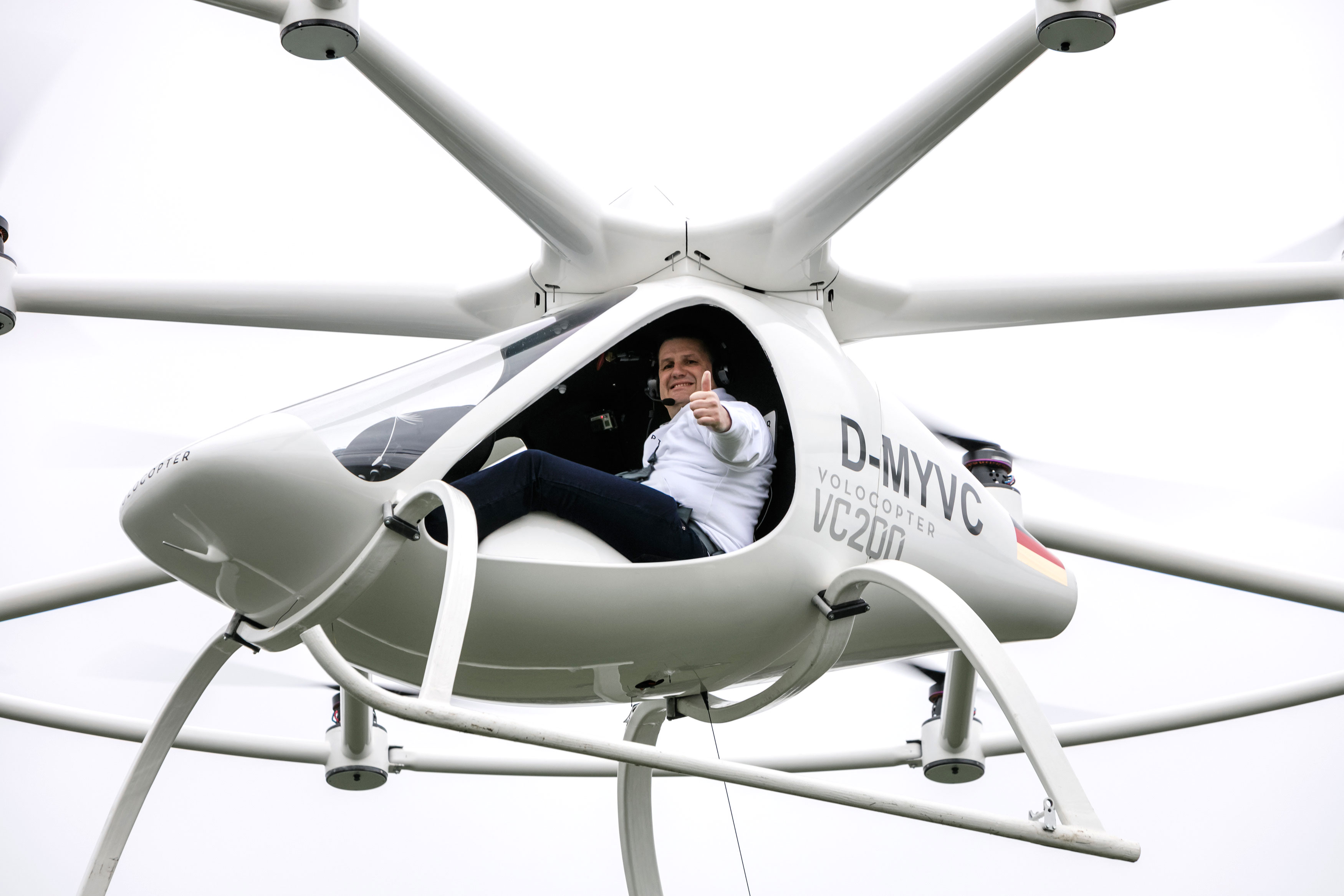Our video about its maiden flight went viral with more than 20 million views on YouTube. NASA called us and the Australia’s Civil Aviation Safety Authority published a rave review in their safety bulletin.
Flying high on this euphoria, Stephan and Alex sought and received €2 million funding from the German Ministry of Economic Affairs. This gave them the financial clout to reach out to potential partners in a bid to build a serious aircraft. That plan panned out rather quickly – by 2013, they had developed the first VC200 prototype. Today’s structure looks quite similar, but its inner workings are a lot more advanced.
In late 2013, Stephan and Alex set out to raise half a million euros on the German crowd-funding platform Seedmatch. They had it within 2.5 hours. Reaching their extended target of €1.2 million on the third day, they froze the offer for the time being.
Volocopter was an R&D project, and before our founders gave up their full-time jobs they knew it would need to become a serious company with professional structures. So they went looking for someone with experience in setting up a startup.
After studying industrial engineering and several years in management consulting, I joined Siemens in Munich, where my job was to commercialize new technologies. Part of that was getting startups off the ground and translating technology into products.
Eventually I realized that what I really wanted was to join a startup. That’s just when Volocopter came knocking. The idea of an electric helicopter – a drone scaled up for humans – that clicked with me. If I was going to put my heart and soul into a startup, it would have to pursue something as exciting as this.
On January 1 2015 I joined the company as the third managing director and fifth employee. Our headcount is now fast approaching the 100 mark.
Is Volocopter part of a larger effort to transform mobility in society?
New alliances and new competitive situations are emerging in rail, road and air transportation. Everyone who has anything to do with transportation – and we’re talking about a lot of industry sectors here – is nervous. They all need to get their bearings, face up to a new reality and figure out what role they’re going to play in it. These changes are mostly tech-driven. Digitalization, for instance, is one trend that is engendering new business models.
Another driver is the autonomous vehicle. Then there’s ever smaller and more powerful electronic circuitry. The same goes for batteries. The technology is out there, and we’re at a tipping point for big changes in transportation and aviation.
We’ll soon see new ways of flying, with great innovations to come, particularly in inner-city aviation. Volocopter is spearheading this development. Every type of carrier will have a different mission in terms of long, medium and short distances and the number of runs. The best aviation concepts will rise to the top for each application. We focus completely on short distances with a highly redundant model. For that mission, our concept is the most convincing.
We’re gearing up to take on a completely new form of transportation with Volocopters serving the inner city area. Our brand of mobility, particularly in urban aviation, will have a lot more in common with the fast-changing car industry than with the traditional aviation industry. That’s why Daimler is our partner. They know how to develop cars and manufacture at large scale unlike anything aviation has ever seen. Innovation cycles, regular facelifts, new product variants and the like are all part of this.
At the same time, we’re also doing business in the highly regulated aviation industry. We are prepared to deal with regulations that may only be slightly amended; after all, it is human life we are talking about. It’s a balancing act. We’re shaping up to make this work and preparing for a world where airborne urban transportation is part of everyday life and a smart supplement to other means of transport.


